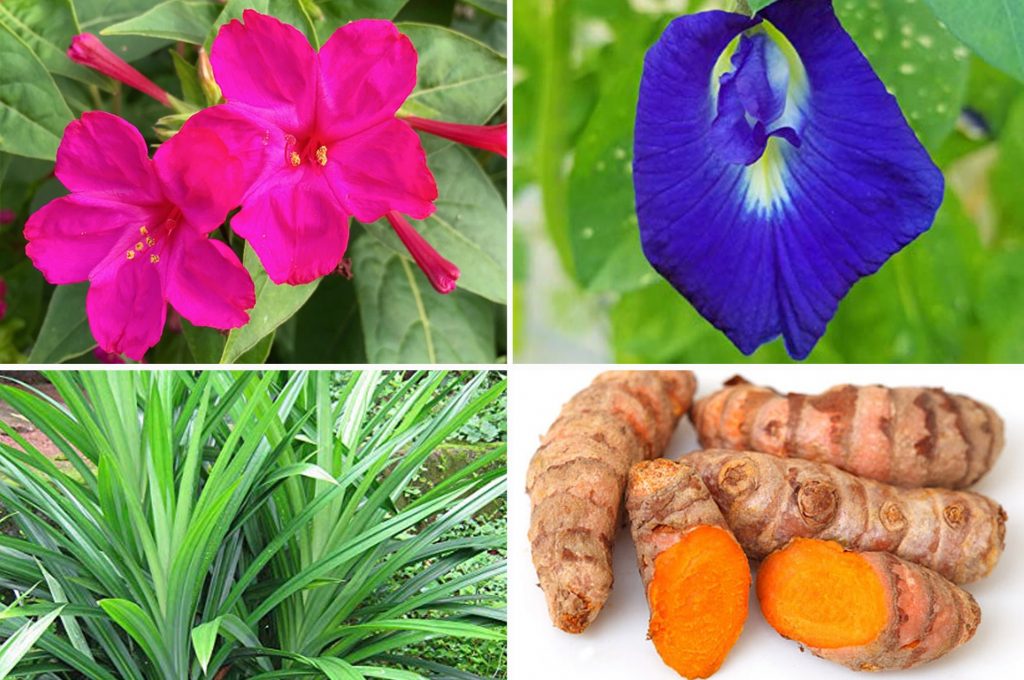Color plays an important role in our food preference. It can predetermine how we perceive the taste and flavor of what we’re about to eat. In fresh foods, we rely on the color to determine their level of ripeness or freshness. For processed food, it becomes a whole different topic. When food undergoes processing, it loses its naturally vibrant color, thus the need for artificial color additives or food coloring.

Artificial coloring makes any food product more delectable and mouth-watering. Unfortunately, some of them are actually harmful to the body. Although some claims are still to be validated and are subjected to debates, they can be toxic and carcinogenic.
To address this, researchers from the University of the Philippines Los Baños (UPLB) led by Lourdes B. Cardenas of the Institute of Biological Sciences, conducted a study with the hope of providing the public a healthy and safe alternative to artificial food coloring using indigenous plants. The study, “Biotechnology in the Utilization of Natural Colors from Indigenous Plants,” which was funded by the Bureau of Agricultural Research, aimed to identify indigenous plants with health benefitting natural colors and develop technologies using them.
The study screened over 20 indigenous plant species among them included: alugbati, lipote, duhat, 4 o’ clock, gumamela, roselle, butterfly pea, pandan, turmeric, barberry, kamantigi, begonia, mayana leaf, bougainvilla, talinum, oxalis, impatients, portulaca, nasturtium, and bell pepper.
These indigenous plants were screened using the following criteria: 1) toxicity, 2) tinctorial strength (potency of the pigment) but with minimal or without imparting any flavor or aroma, 3) availability of the raw materials and ease of handling, 4) mutagenicity (capacity to induce mutations), and 5) stability of the pigment under different pH, temperature, and light regimen. Also considered in choosing the plant pigment as food colorant are solubility in water, and demand of a particular color in the market.
As potential food colorants, the researchers included plant species with Anthocyanins and Betalains, these are plant pigments that are water soluble. Carotenoids were not included in the study as these pigments are not water soluble and are sensitive to light.
Meanwhile, the researchers included Curcuminoids (not water soluble), which can be found in turmeric, because it was found to be the best alternative natural colorant to Tartrazine (synthetic lemon yellow azo dye primarily used as a food coloring).
To get the results, the colorants were tested under different types of food preparation: fresh, steamed, boiled, and baked. They prepared salad using the begonia, and ice cones or scramble with a whole extract from lipote, turmeric, and butterfly pea directly poured on top of the shaved ice. A fondant was made using the lipote, 4 o’clock, and butterfly pea color extracts; and gelatins, puto, suman, butter cookies, scones, and chocolates using the color extracts from alugbati, lipote, turmeric, butterfly pea, and 4 o’clock. The extracted natural pigments were also put inside micro capsules for stability.
Results of the study showed that among the plant species tested, the best sources of red colorant are: alugbati (Basella rubra L.), lipote (Syzygium curranii), and red 4 o’clock (Mirabilis jalapa L.). Meanwhile, the best source for yellow pigment is turmeric (Curcuma domestica (L.); for blue pigment it is butterfly pea (Clitorea ternatea var. pleniflora); and for green pigment it is pandan (Pandanus amaryllifolius Roxb).
Duhat (Syzygium cumini), red gumamela (Hibiscus rosa-sinensis L.), and roselle (Hibiscus sabdariffa L.) were dropped from the list due to factors involving toxicity, stability of pigment, availability of raw materials, and difficulty in extraction of pigment, among others.
The researchers noted that not all pigments from the plant species can be processed into colorants due to low tinctorial strength, and fragility, among others. But even so, these can still be used as colorants for freshly-picked ingredients to dishes that include the begonia, talinum, oxalis, impatiens, portulaca, and nasturtium.
As a final product, the project was able to develop natural colorants in the form of freeze dried whole extracts, microcapsules, gelatin bars, and glycerine solutions.
With the health benefitting natural colors that these indigenous plants can provide, these natural colorants are better option than their synthetic counterparts. It not only improves the quality of our food, it also enables us to utilize these indigenous plants which are readily available and easily harvested from our gardens. ### [Rita T. dela Cruz]


Does this mean that colored gulaman bars have natural and not artificial colors? If so, then
I can use them as a substitute for artificial coloring’in making cheesecakes.